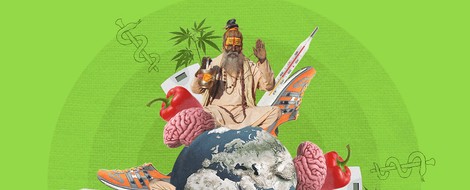Your podcast discovery platform
Curious minds select the most fascinating podcasts from around the world. Discover hand-piqd audio recommendations on your favorite topics.

piqer for: Health and Sanity Boom and bust Climate and Environment
Melissa Hutsell is an award-winning freelance journalist with a deep rooted passion for both community and international journalism. She was born and raised in Northern California, and has lived, studied, worked, and traveled in more 20 different countries. Melissa holds a Master's degree in Global Journalism from City University London, as well as degrees in Journalism and Globalization from Humboldt State University. Though she covers various topics as both a writer and editor, she specializes in business and cannabis journalism.
Insect Milk … The Next Alternative to Dairy?
Insect milk, particularly cockroach milk, may be the next big alternative to dairy, and a future solution to food shortages.
Experts say that the milk is packed with health benefits for humans due to a rare “milk crystal” produced by the Pacific Beetle Cockroach. It’s packed with essential amino acids and has four times the protein of cow’s milk.
The research isn’t new — a group of scientists helped to sequence the protein crystal in 2016 in the hope of re-creating it in a lab. Because milking these insects isn’t feasible, they are hoping to get yeast to produce it in larger forms (and possibly put it in pill form).
"The crystals are like a complete food — they have proteins, fats and sugars,” said one of the team’s researchers, Sanchari Banerjee, in 2016. "If you look into the protein sequences, they have all the essential amino acids."
As these proteins are digested, they release more nutrients and calories, meaning it’s time-released food, the article explains. This could be used to help alleviate future food shortages as they are a stable, high source of protein.
Who needs quinoa when you’ve got cockroach milk supplements, the author ends with a quip.
